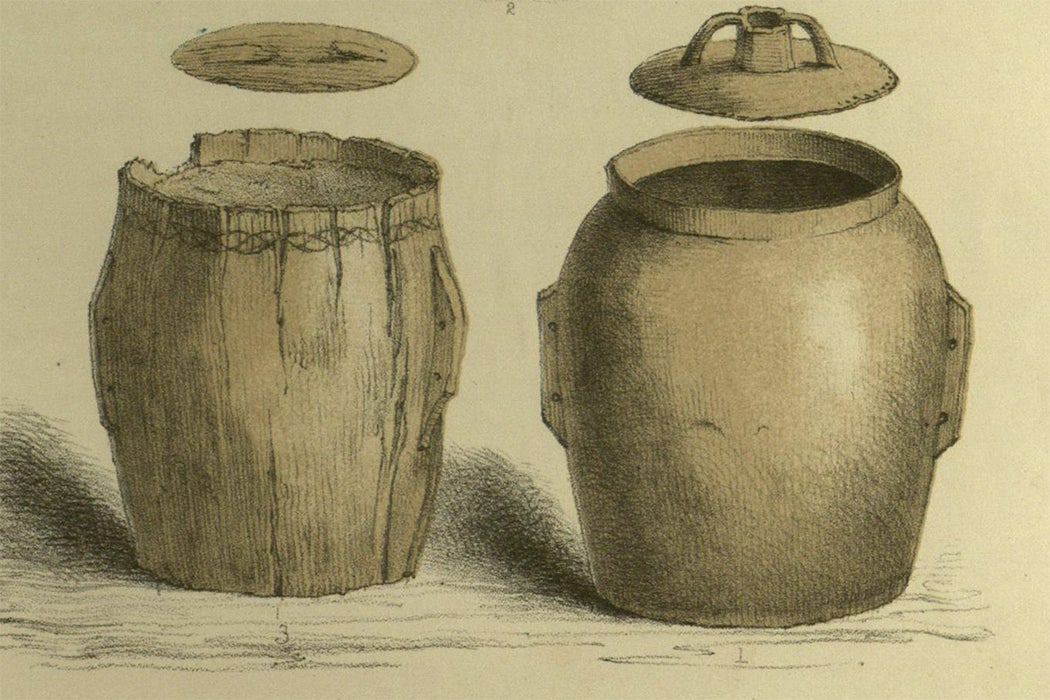Bogs are Ireland’s original refrigerators. And they are pretty good—even 3,000 year-old bog butter is edible. We know this because archeologists tended to eat it. But is refrigeration the only reason that people threw dairy products into the soggy, marshy, peatland known as bogs?
In 1859 Edward Clibborn and James O’Laverty wrote with great excitement that for the first time an almost perfect wooden butter container had been found in a bog, and the contents tasted “somewhat like cheese.” Their contemporary Edward Clibborn, Curator of the Royal Irish Academy, tasted his findings too. “I have tasted,” he wrote, “Every specimen of bog-butter to which I have had access… although I found them all rancid or acid (except one, which I may say is fossilized).” That these men lived to write about their culinary habit means that the bog kept the wooden container from rotting and the bog butter from spoiling for a long time… a very, very long time.
About 150 years later, radiocarbon tests dated bog butter findings from the seventeenth century BC (Bronze Age) to the eighteenth century AD. That’s 3,500 years! The secret is the anaerobic nature of the bog. Without oxygen, neither the butter nor its wooden container decompose.
Curiously, some wooden vessels predate the butter that is in them, some by several hundred years. This suggests that they were reused and passed from generation to generation. Because of this, we can study how handles enlarged to become loops, when decorative patterns began to appear, and even chiselling techniques. Since design links to function, we can also study 3,500 years of milk in the Irish diet.
The Irish diet has always featured cow’s milk. Cows were Iron Age currency, butter was paid as food-rent, and Ireland has a 2,000-year history of booleying. Booleying means transhumance, the seasonal cycle of people moving with their animals to new grazing grounds. Booleying was “girl’s work,” but sometimes entire households migrated with their cows. They lived in upland shelters during summer and autumn and returned down-land with butter for winter and spring. While upland they made butter, which was a female task. They pressed it into previous years’ wooden containers and preserved it in cool bogs until the journey back downhill. This worked because the absence of oxygen in the bog kept the butter and its wooden barrel from rotting.
Weekly Digest
But not all bog butter was meant to be found—at least, not by those who put it there. Votive offerings and kingship and sovereignty rites were common during the Bronze and Iron Ages, especially west of the River Shannon and along barony borders. Many of the oldest bog butters came from these areas—along with contemporary bog bodies, personal effects, and weapons. So there is a mystery about bog butter. Although most of it was probably forgotten food, some bog butters were offerings. And no one is quite sure which is which. In any case, the bog is, uncontested, the best fridge on record.







